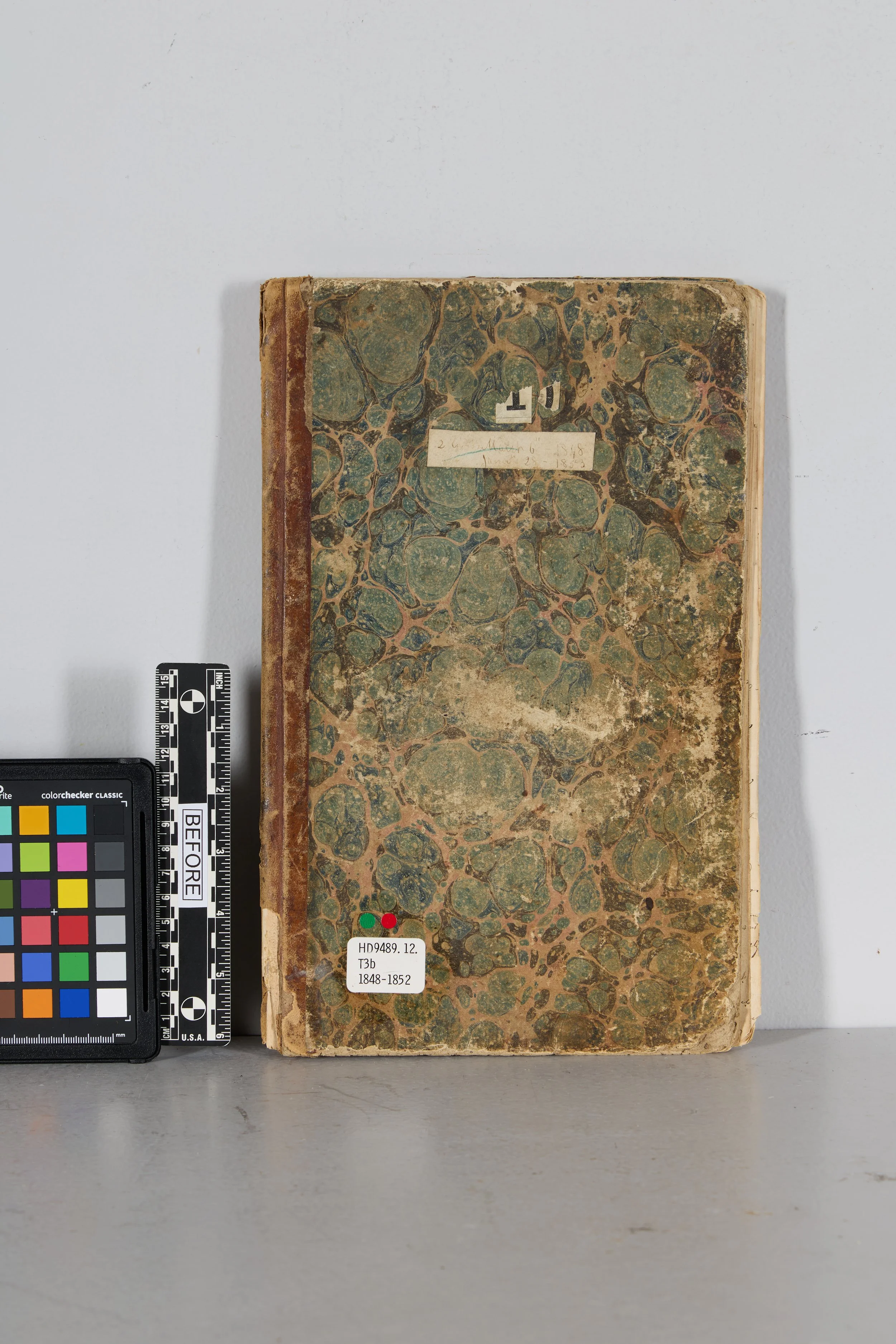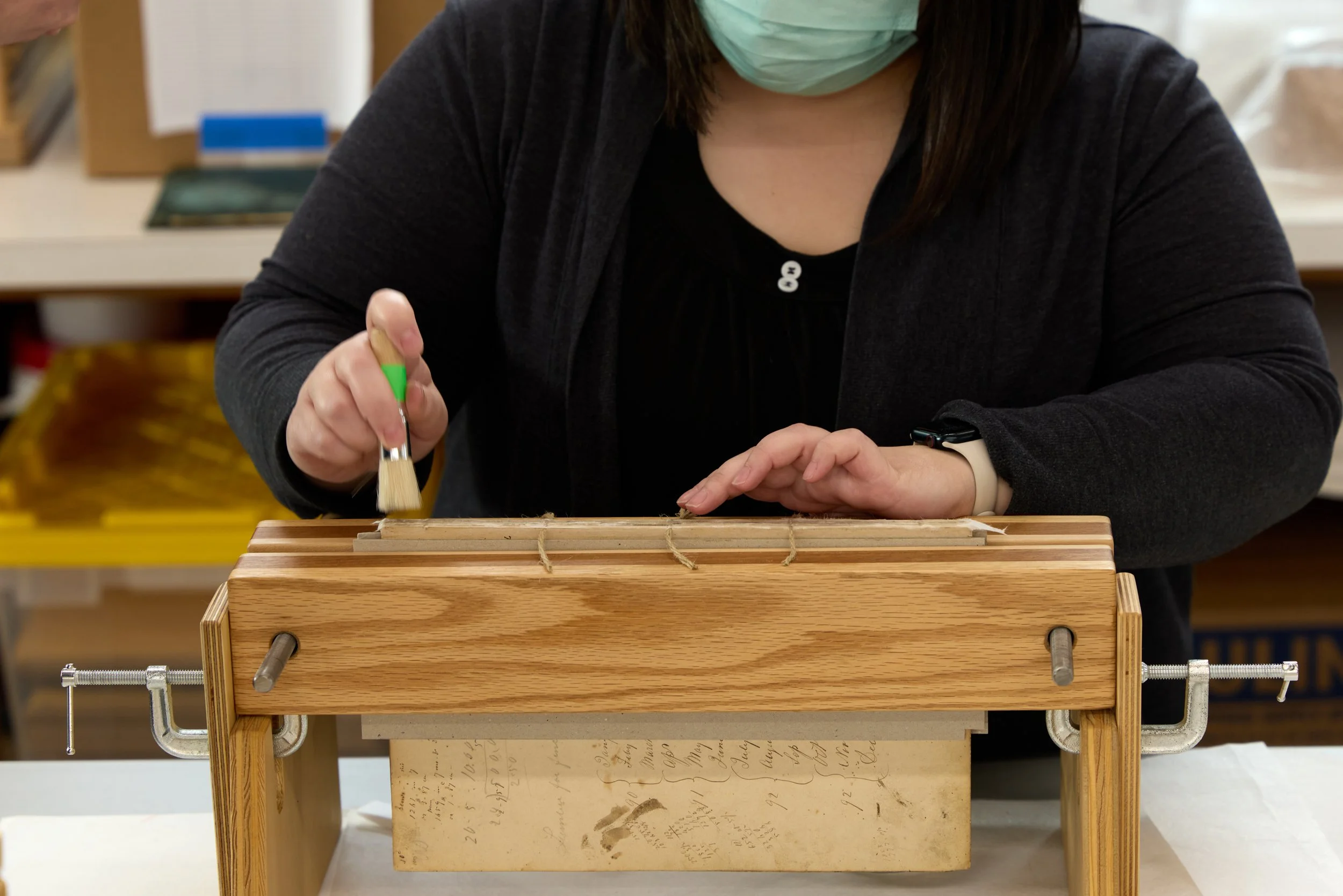This month, we’re taking readers behind the scenes of a remarkable 19th-century ledger from a longstanding corporate collection, an object that has quietly survived nearly two centuries of use, storage, and changing hands. Bound in worn leather and filled with handwritten entries tracking transactions from 1848 to 1852, the ledger is not only a piece of institutional history but a tangible record of the people who kept those early operations running. As more companies recognize the cultural and research value within their archives, projects like this show how conservation protects objects that help tell their story.
Watch Katrina Flores, associate conservator of works on paper, sew the textblock of the ledger in a short video below — then scroll to learn more!
The ledger arrived at The Center in extremely fragile condition. The pages bore the marks of daily handling, with deep creases, dents, oil stains, and fingerprints left by generations of recordkeepers. Age-related discoloration and foxing were present throughout, and small traces of insect migration added another layer to its long physical history.
Before treatment.
Before treatment.
The binding had taken the greatest toll. Both of the covers showed heavy wear and delamination, with abrasions and significant losses to the leather spine. The sewing structure had loosened to the point of failure, and both the inner and outer hinges had fully detached. A section of the text block had been removed long ago, leaving a visible gap in the narrative of the ledger. A fine layer of particulate film settled across the surface, highlighting the need for stabilization before the book could safely be opened or digitized.
Conservators began with thorough documentation, photographing the ledger in detail before treatment. Then, the surface was gently cleaned to remove accumulated particulates without disturbing the original writing or putting added stress on the weakened paper. The compromised sewing was then removed so that tears throughout the text block could be repaired using Japanese tissue and wheat starch paste.
To strengthen the structure for ongoing research use, guards were added to each signature, and the spine was carefully resewn. Missing areas along the cover and spine were reinforced with a sympathetically toned repair paper that offered support while respecting the ledger’s age and character. Once the text block had been stabilized, it was rehung into the original covers, and new inner and outer hinges were added to ensure secure and reliable opening.
Click through the images below to watch treatment progress:
By the end of treatment, the ledger retained all the visual evidence of its long working life while gaining the structural stability needed for long-term preservation. It is now ready for the next phase of this project, which includes digitization and archival housing. We will explore this phase in next month’s newsletter.
For corporate clients stewarding archives that may include bound volumes, photographs, audiovisual media, textiles, or three-dimensional objects, this project illustrates the value of a coordinated conservation and digitization approach. Each collection presents its own challenges, and our role is to create solutions that ensure these materials remain accessible, safe to handle, and meaningful to future researchers.
Stay tuned for Part II next month, when our archives and digitization team transforms this newly conserved ledger into an accessible, research-ready digital record.























